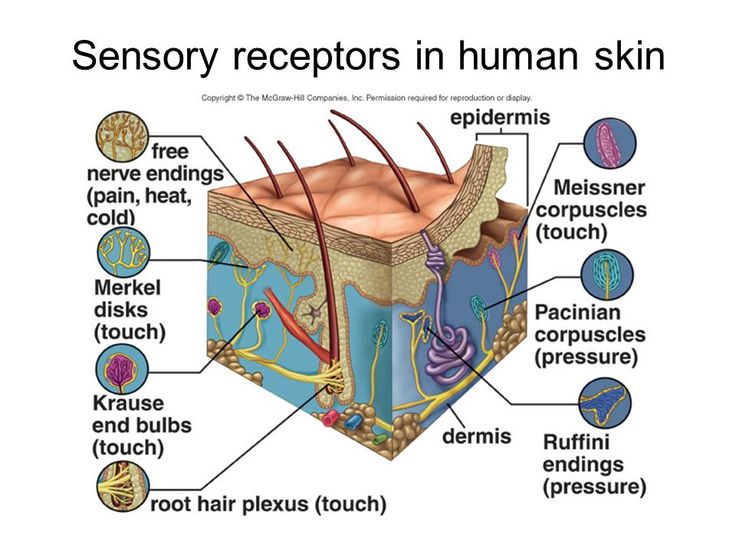

Varicose appearance, often close to arterioles. Terminal nerve branches – PGP9.5, S100, trkB Incomplete capsule – p75

Groups of arborizing and terminal nerve endings. Terminal nerve branches – PGP9.5, trkB Incomplete capsule – p75 Table 4.1 Classification of mechanoreceptors in ligaments based on Freeman and Wyke, 2modified by Hagert, 8outlining the morphology and function of the various sensory nerve endings found in the human handĪrborizing nerve branches with bulbous terminals. ( d) Finally, free nerve endings ( arrow) are p75 IR and often located close to vessels ( star). Typically smaller corpuscles within the Golgi-like ending are seen ( arrowhead). They are slow to adjust to a stimulus and so are less sensitive to abrupt changes in stimulation. Free nerve endings are sensitive to painful stimuli, to hot and cold, and to light touch. Free nerve endings are the most common nerve endings in skin, and. Free nerve endings are the most common nerve endings in skin, and they extend into the middle of the epidermis. ( c) The Golgi-like ending is larger, with an afferent nerve fascicle ( arrow) coursing to the center of the corpuscle. A free nerve ending, as its name implies, is an unencapsulated dendrite of a sensory neuron. ( b) In contrast, the Pacini corpuscle has an onion-layered p75 IR capsule ( arrowhead) and central axon ( arrow). ( a) A Ruffini ending characterized by p75 immunoreactive (IR) dendritic nerve endings ( arrowhead), a clearly visible central axon without IR ( arrow), and a thin, at times partial, encapsulation of the corpuscle. 4.1 Immunohistochemical staining of sensory nerve endings using low-affinity nerve growth factor receptor p75 (p75) (magnification × 400). Free nerve endings are commonly found in hairy and smooth (glabrous) skin.
#Function of free nerve endings in skin skin#
Some areas of the skin contain more nerve endings than others. Sensory nerve endings are found mostly close to ligament insertions into bone as well as in the epiligamentous region of ligaments, 3 – 6where they can act as monitors of tension and force applied to the ligament. and methods are introduced for investigating the functional organization of. The nerve endings sense pain, touch, pressure, and temperature. Examples are pain receptors, temperature receptors, Merkel. 4.1) and neurophysiological traits (▶ Table 4.1). Unencapsulated receptors - these have no special structure and are basically free nerve endings. Sensory nerve endings in ligaments are classified according to Freeman and Wyke 2into four types, based on their typical shape (▶ Fig. They are able to detect mechanical stimuli, such as changes in joint position and velocity, transform them into neural excitations, and signal this information from the joint via afferent nerves and dorsal root ganglia to the spinal cord.

Sensory nerve endings, so-called mechanoreceptors, are the primary focus of innervation studies in joints. 4.2 Innervation of Joints in the Human Hand


 0 kommentar(er)
0 kommentar(er)
